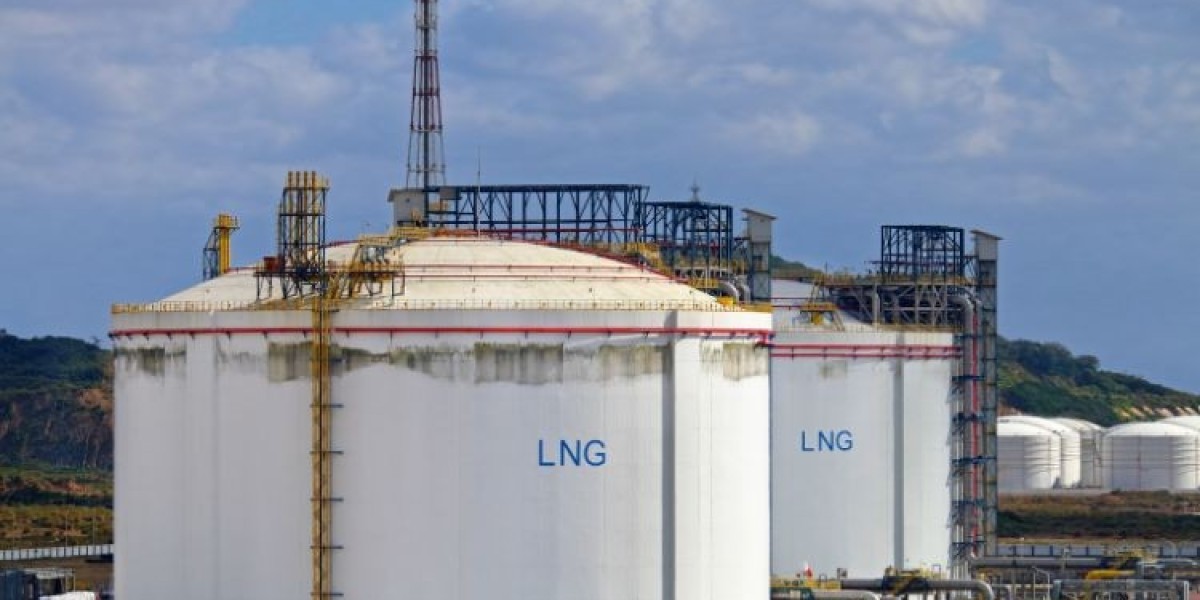The global liquefied natural gas (LNG) storage tank market size has witnessed substantial growth in recent years, with the market size reaching approximately USD 5.71 billion in 2023. Projections indicate further growth at a compound annual growth rate (CAGR) of 4.6% between 2024 and 2032, culminating in a value of USD 8.57 billion by 2032. This expansion is driven by the increasing demand for natural gas as a cleaner alternative to traditional fossil fuels and the growing global emphasis on energy transition and sustainability.
However, alongside this growth comes the imperative need to ensure the safety and reliability of LNG storage facilities. LNG storage tanks are critical components of the LNG supply chain, facilitating the storage, transportation, and distribution of liquefied natural gas. Despite their importance, operating LNG storage tanks presents inherent risks due to the unique properties of LNG, including its cryogenic temperatures and potential for flammability.
In this blog post, we will delve into the significance of LNG storage tank safety regulations, exploring the regulatory landscape, the rationale behind these regulations, compliance and enforcement measures, advances in safety technology, challenges facing the industry, and future directions for enhancing LNG storage tank safety.
Overview of LNG Storage Tank Safety Regulations:
LNG storage tank safety regulations are established and enforced by regulatory bodies at the international, national, and regional levels. These regulations aim to ensure the safe design, construction, operation, and maintenance of LNG storage facilities, minimizing the risk of accidents, environmental damage, and harm to personnel.
At the international level, the International Maritime Organization (IMO) plays a central role in setting standards for the safe transportation and handling of LNG. The IMO's International Code for the Construction and Equipment of Ships Carrying Liquefied Gases in Bulk (IGC Code) provides comprehensive guidelines for the design and construction of LNG carriers and storage tanks, addressing aspects such as material selection, structural integrity, and safety systems.
In addition to international regulations, individual countries and regions have their own sets of safety standards and requirements governing LNG storage tank operations. For example, in the United States, the Department of Transportation's Pipeline and Hazardous Materials Safety Administration (PHMSA) oversees the transportation of LNG by pipeline and sets safety standards for LNG facilities. Similarly, in Europe, the European Union's Directive on the Safety of Offshore Oil and Gas Operations (OSD) establishes safety requirements for offshore LNG installations.
The Rationale Behind Safety Regulations:
The need for stringent LNG storage tank safety regulations stems from the inherent risks associated with LNG operations. LNG is stored and transported at cryogenic temperatures, typically below -160°C (-260°F), and can vaporize rapidly if released into the atmosphere. Additionally, LNG is flammable in certain concentrations, posing a risk of fire or explosion if ignited.
Historical incidents have underscored the importance of effective safety measures in the LNG industry. One notable example is the Cleveland East Ohio Gas Explosion in 1944, which resulted in a massive explosion and fire that destroyed several city blocks and claimed over 130 lives. More recently, the Skikda LNG plant explosion in Algeria in 2004 resulted in multiple fatalities and extensive damage to the facility.
These incidents highlight the catastrophic consequences of inadequate safety regulations and underscore the importance of preventing accidents through robust regulatory oversight. Safety regulations are designed to identify and mitigate potential hazards, ensuring the safe operation of LNG storage facilities and protecting personnel, communities, and the environment from harm.
Compliance and Enforcement:
Compliance with LNG storage tank safety regulations is essential for operators and stakeholders in the LNG industry. Regulatory authorities conduct regular inspections, audits, and assessments to verify compliance with prescribed standards and requirements. Non-compliance can result in severe penalties, including fines, sanctions, license revocation, and legal liabilities.
Regulatory enforcement mechanisms vary depending on the jurisdiction and regulatory framework. In the United States, for example, the Pipeline and Hazardous Materials Safety Administration (PHMSA) oversees LNG facilities' compliance with safety regulations and conducts inspections to ensure regulatory compliance. Similarly, in Europe, national regulatory agencies such as the Health and Safety Executive (HSE) in the United Kingdom enforce safety regulations for LNG storage facilities.
Operators of LNG storage facilities are responsible for implementing and maintaining effective safety management systems to ensure compliance with regulatory requirements. Safety management systems encompass a range of activities, including risk assessments, safety audits, emergency preparedness drills, and employee training programs. By establishing robust safety management systems, operators can mitigate risks, enhance operational safety, and demonstrate compliance with regulatory requirements.
Advances in LNG Storage Tank Safety:
Technological innovations have played a crucial role in improving LNG storage tank safety and reliability. Industry stakeholders continually invest in research and development to develop innovative solutions for mitigating risks and enhancing safety in LNG operations. Some key advances in LNG storage tank safety technology include:
Advanced Materials: The development of advanced materials with superior cryogenic properties has enabled the construction of more resilient LNG storage tanks. High-strength steels, aluminum alloys, and composite materials offer improved durability, corrosion resistance, and fracture toughness, enhancing the structural integrity of LNG storage tanks.
Double-Wall Tank Designs: Double-wall LNG storage tank designs incorporate an additional layer of protection to prevent leaks and spills. These tanks feature an inner containment vessel for storing LNG and an outer protective barrier to contain any potential leaks or releases. Double-wall tank designs provide an added layer of safety and environmental protection, reducing the risk of LNG containment breaches.
Remote Monitoring and Control Systems: Remote monitoring and control systems enable real-time monitoring of LNG storage tank conditions, allowing operators to detect abnormalities, leaks, or other safety hazards promptly. These systems utilize sensors, telemetry, and data analytics to provide operators with comprehensive insights into tank performance and integrity, facilitating proactive maintenance and risk management.
Best Practices for LNG Storage Tank Safety:
In addition to technological innovations, industry stakeholders adhere to best practices and standards for ensuring LNG storage tank safety. Some key best practices include:
Risk Assessments: Conducting comprehensive risk assessments to identify and evaluate potential hazards associated with LNG storage tank operations, including equipment failures, human errors, and external threats. Risk assessments enable operators to prioritize safety measures and allocate resources effectively to mitigate identified risks.
Safety Audits: Performing regular safety audits and inspections of LNG storage facilities to assess compliance with regulatory requirements and identify areas for improvement. Safety audits involve evaluating equipment, procedures, training programs, and emergency response plans to ensure they meet established safety standards.
Emergency Preparedness: Developing and implementing emergency response plans for LNG storage facilities to effectively respond to accidents, spills, fires, or other emergencies. Emergency response plans outline procedures for evacuating personnel, containing spills, mitigating hazards, and coordinating with emergency responders to minimize the impact of incidents.
Personnel Training: Providing comprehensive training and certification programs for personnel involved in LNG storage tank operations, including operators, maintenance technicians, and emergency response teams. Training programs cover safety procedures, hazard awareness, equipment operation, and emergency response protocols to ensure personnel are prepared to respond effectively to potential safety hazards.
Case Studies: Successful Implementations of LNG Storage Tank Safety Measures:
Several case studies demonstrate the effectiveness of safety regulations and best practices in mitigating risks and enhancing safety in LNG storage tank operations.
Sabine Pass LNG Terminal, USA: The Sabine Pass LNG terminal in Louisiana, USA, is one of the largest LNG export facilities in the world, with a total storage capacity of over 17 billion cubic meters. The terminal incorporates state-of-the-art safety features, including double-wall storage tanks, remote monitoring systems, and emergency shutdown procedures. These safety measures have contributed to the terminal's exemplary safety record and its ability to operate safely and reliably.
Qatargas LNG Plant, Qatar: The Qatargas LNG plant in Ras Laffan, Qatar, is the largest LNG production facility in the world, with a production capacity of over 77 million tonnes per annum (MTPA). The plant implements stringent safety regulations and best practices to ensure the safe handling and storage of LNG. Key safety measures include robust structural design, advanced fire detection and suppression systems, and comprehensive emergency response plans. These safety measures have enabled the plant to operate safely and sustainably, despite its size and complexity.
Challenges and Future Directions:
Despite significant progress in LNG storage tank safety, several challenges remain that require ongoing attention and innovation.
Emerging Technologies: The adoption of emerging technologies such as floating storage and regasification units (FSRUs) and small-scale LNG facilities presents new safety challenges that require careful consideration and regulatory oversight. FSRUs, for example, operate in offshore environments and require specialized safety measures to mitigate risks associated with marine operations and harsh environmental conditions.
Regulatory Harmonization: The global expansion of LNG infrastructure into new markets necessitates harmonization of safety standards and regulatory frameworks across jurisdictions. Regulatory inconsistencies and discrepancies between countries can create challenges for multinational companies operating in multiple regions, requiring coordination and cooperation among regulatory authorities to align safety requirements and facilitate compliance.



